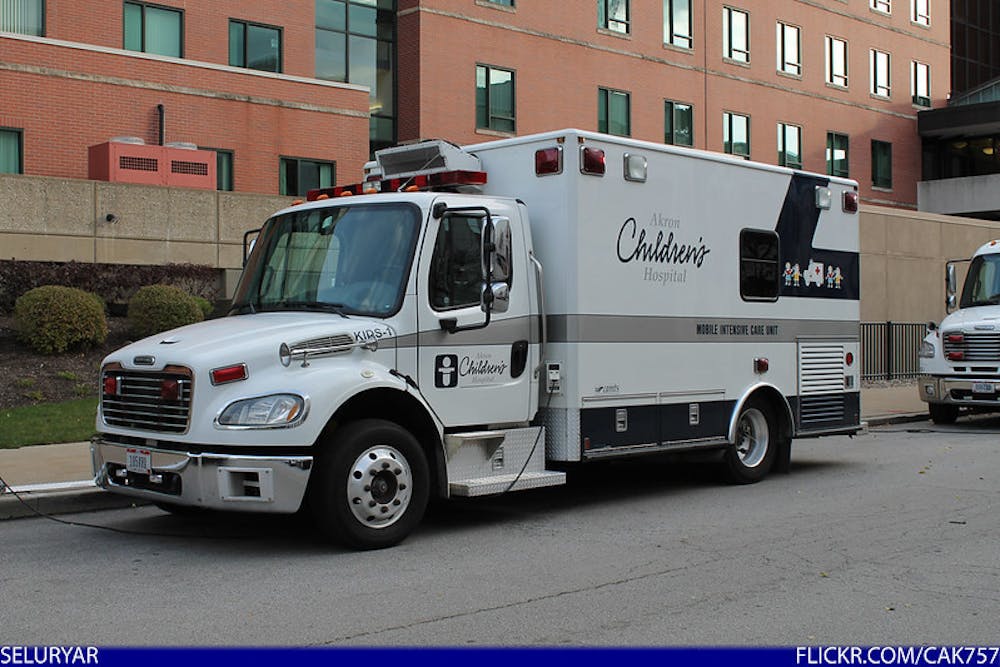Last Monday, the Rare Disease Day Panel hosted by the Disability Activism Student Organization (DASO) featured three undergraduate students with rare medical conditions. The panel consisted of freshmen Kate Ketelhohn and Leyra Espino-Nardi and junior Garryn Bryant.
When Ketelhohn was an infant, she contracted group A Streptococcus. The bacteria itself is not rare and leads to common mild illnesses such as strep throat and ear infections. However, in rare circumstances it can enter the bloodstream and send the immune system into overdrive, causing it to attack its own organs and tissues.
Ketelhohn then experienced septic shock, which is when the body’s blood pressure falls and its organs shut down in response to infection. Further complications arose, including overactive blood clotting and infection of the protective covering of her spinal cord.
“I have had 54 surgeries to amputate and to correct the damages sustained by the diseases,” Ketelhohn said during the panel. “I’ve been very well trained to know the difference between bone pain, muscle pain, nerve pain — so all types of pain.”
Espino-Nardi has congenital hydrocephalus, which is a buildup of fluid in the cavities of the brain. In her case, the condition was caused by aqueductal stenosis, which is the compression or narrowing of aqueducts in the brain that results in a blockage in the flow of fluid.
In order to drain the excess fluid, a shunt runs from her brain, down her neck and further down the left side of her body and delivers the fluid to her abdomen, where it can be absorbed. During her treatment, Espino-Nardi experienced strokes, which led to multiple disabilities including vision loss. Through her recovery process, she has undergone over five years of physical, occupational, speech and vision therapy combined.
Garryn Bryant was diagnosed with type 1 narcolepsy, previously referred to as narcolepsy with cataplexy. Narcolepsy is characterized by excessive daytime sleepiness (EDS) due to abnormalities in the regulation of the sleep-wake cycle. Although the timing when sleep occurs is altered, those with narcolepsy sleep for the same length of time as those without the disease.
Bryant was later diagnosed with idiopathic hypersomnia, which is also associated with EDS, but primarily due to the overwhelming need for excessive amounts of sleep (defined by Hopkins Medicine as being over nine hours). Bryant was also recently diagnosed with chronic bilateral compartment syndrome in her legs. This means physical exertion results in a painful buildup of pressure, as connective tissue under the skin is unable to expand with the muscle.
As defined in the Orphan Drug Act of 1983, a disease must be prevalent in less than 200,000 people in the U.S. in order to be classified as rare. All panelists agreed that the relatively low number of individuals with their particular disease has resulted in a lack of knowledge surrounding the rare conditions.
Bryant and Ketelhohn both recounted experiences with people — including doctors — undermining the validity of their diseases by assuming their diseases or requests for pain medication were due to drug addiction. While none are recreational drug users, these and similar accusations have led the panelists to question whether they were overreacting when vocalizing their issues.
Freshman Kristiana Smith, attendee of Monday night’s panel, shared her key takeaways in an interview with The News-Letter.
“It reinforced the idea that you never know what someone is going through. It’s just another lesson to be empathetic with the people you meet and just don’t make assumptions,” Smith said. “It only takes a minute or two to step back from an interaction and be like, hey, I don’t know what they’re going through right now.”
Bryant shared during the panel how her support system helped after someone implied her condition was caused by drugs.
“I kind of started freaking out at that moment. My mom, she was like, ‘Every time you’ve told me there is something wrong, there has been something very wrong,’” Bryant said. “Having supportive family and friends has been absolutely a blessing in my life.”
Ketelhohn shared another example demonstrating the uncertainty surrounding rare diseases in the medical community. She once had to undergo an orthopedic procedure, but to work into her doctor’s schedule, she had to go to an unfamiliar hospital. The staff, unversed in her medical history, severely under-anesthetized Ketelhohn.
“I actually woke up screaming in pain multiple times throughout the night,” she said.
Despite these experiences, all three panelists attributed their well-being to strong support systems that include understanding doctors, family and friends.
“Having a doctor who is supportive and not dismissive and who is genuinely there to help you is vital,” Espino-Nardi said. “My parents also, truly, have saved [my] life by advocating for [me].”





